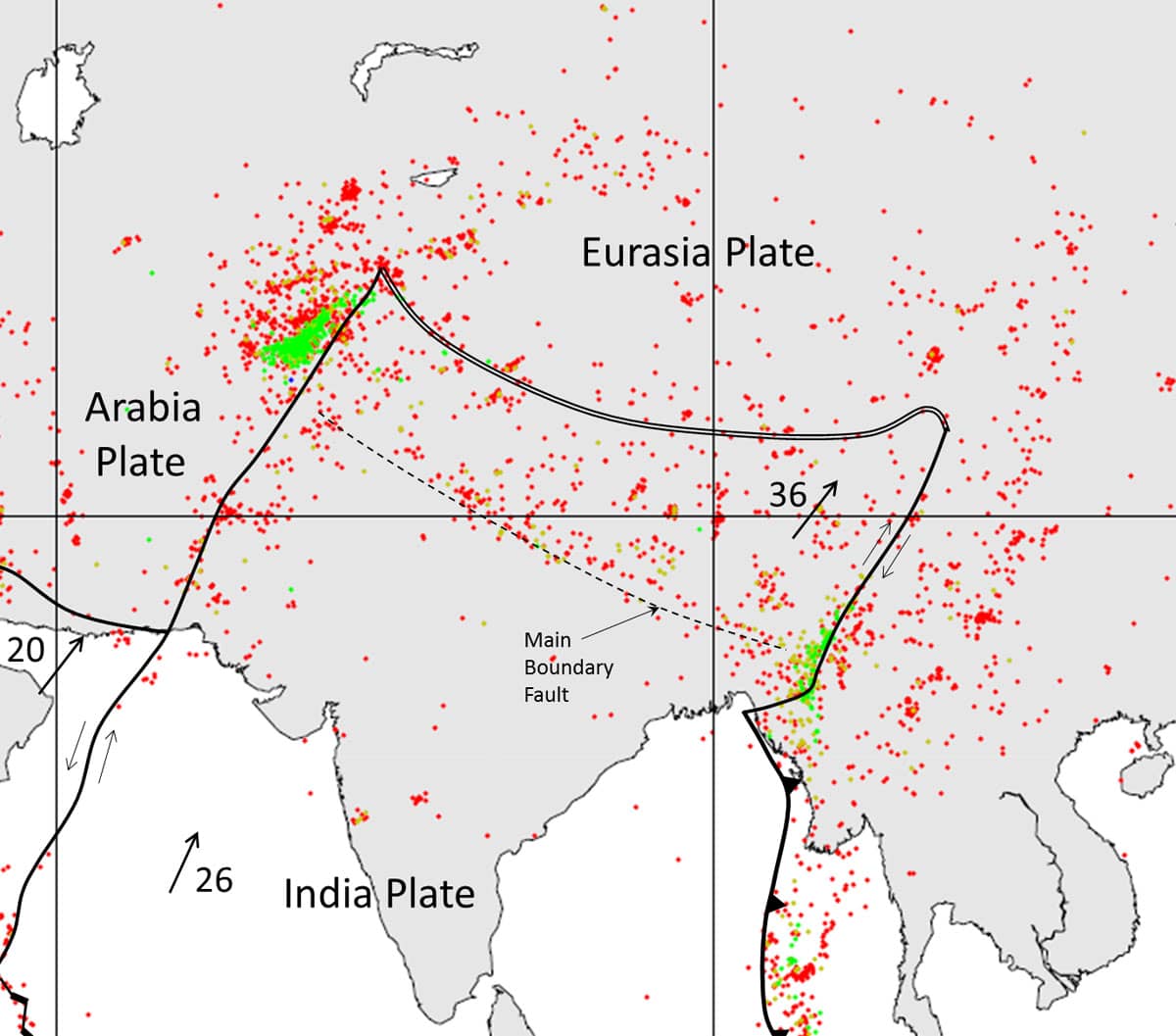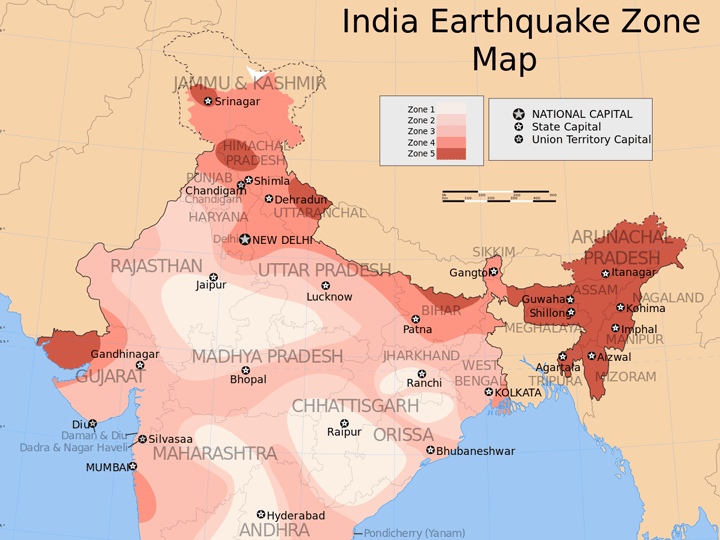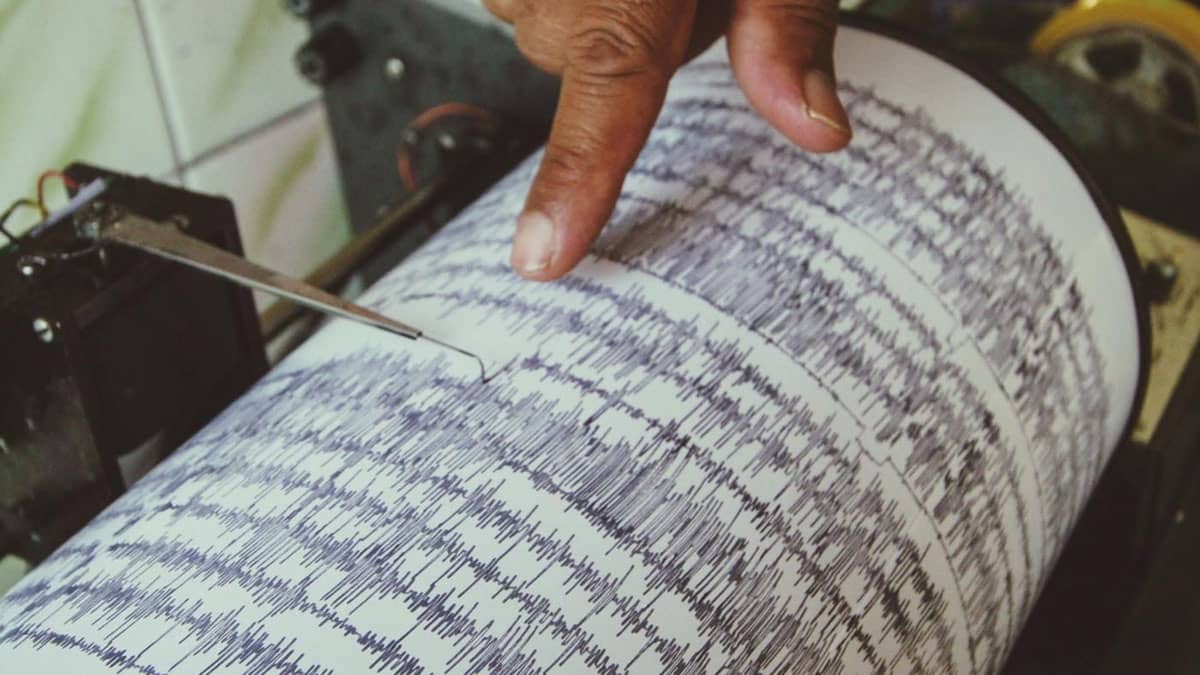Earthquakes are among the most devastating of nature's curses, more scary than anything else because you almost never see it coming. Any country that goes through frequent quakes tries hard to find the solution. India is no exception either. Today, we will look into what is the situation about earthquake prevention in India.
Sitting right on top of one of the major fault lines in the world, the indian subcontinent suffers some of the greatest earthquakes. Those devastating seismic activities in the last century have motivated us to look into scientific solutions to earthquakes. This led to the creation of the first building codes specifically for earthquake resistant housing, in 1935, which were compounded with strengthening guides in 1941.
Most of the matter inside Earth is molten rock. Lava, that is. This molten sea has currents in it like the sea above, only slower, but just as sure. The hard crust of the earth floats on top of this lava ball. And the plates of the crust move with the lava flow underneath.

The problem is that this movement is not uniform across the world. Some plates move faster in one place and slower in another side. This causes friction and collision between plates. Indeed, one such monstrous collision is what gave birth to the Himalayas. Which incredibly is still going on.
And these frictions are exactly what causes the earthquakes.
As I said above, the worst thing about earthquakes is their unpredictability. We know the geological fault lines, yes, but we have woefully few data about the movement along the lines. So, we get to make next to no prediction about seismic activity, and their magnitude.
Our data about the movement of plates come from only a few kilometers deep in the ground. This yields very limited information. Therefore, seismic prediction is a science fiction as of yet rather than being a science. Even its possibility is hotly debated. Meanwhile, thousands of people keep dying every year from earthquakes. We must do something!
Since we cannot focus on the when of seismic activities, we have to focus on the what, in order to prepare to withstand earthquakes. Information is our best starting weapon here. Magnitude and Intensity are the two basic metrics about seismic activity that helps us in this.
Magnitude of an earthquake is the amount of energy released in a quake. It is measured in Richter Scale. A Richter 5.0 quake releases as much energy as the Hiroshima nuclear bomb. Intensity is the measure of how much damage it does and is measured in roman numerals from I to IX. A scale VI quake can wholly bring down an unprotected building.
India has experienced most magnitudes and intensities of Earthquakes. Northern India is very close to the fault line and hence is the most vulnerable from seismic activities. There is a heavy concentration of seismic activity in the Haryana area, and some in Gujarat. Delhi is declared a vulnerable city while Mumbai, Kolkata and Chennai are moderately seismic.

Sadly, we are quite far from taking advantage of all the data available to us. While some of the greatest earthquakes (above Richter 8.0) have happened in India, we still do not pay heed. The number of persons effectively involved in seismic study in India is very small. This means that the movement for motivating the Indian government about earthquake prevention is little or none.
Add to that the tendency of indian education system of just passing the exams instead of actually learning something. It's true, there is a chapter of earthquake prevention in civil engineering studies. But how seriously is it taken? Most BE students hardly get a couple of lectures about earthquake-safe engineering. And in M.Tech you may take one paper, if you wish.
And how is that "knowledge" used? Look around yourself. Most of the civilian housings are not built to ANY specification, let alone seismic protection guides. Only in case of skyscrapers there is some protection with ISI standard verification. The recent disaster at Bhuj pretty much opened our eyes about reality - we are living in houses of cards.
And then we closed them again. The education about earthquake prevention is woefully low in India. You can do a specialization on seismic engineering in only five places here - IIT Kanpur, Kharagpur, Roorkee, Mumbai and IISC Bangalore. That's it. For a science that can save literally millions of lives, we seem not to care at all!
Among the above, IIT Kanpur shines a light in the gloomy darkness. Initiated by the Kanpur Indo-American Program and pushed up by the University of Michigan, the campus now holds a lot to give to a student of earthquake engineering. With state-of-the-art equipment and tools, this facility has become a shrine of analysis, study, and research about earthquakes in India.

In fact, the paper I mentioned above in the M.Tech was created by this program actually. If you are a Structural Engineering masters student, you can elect the paper on Earthquake-resistant Design of Structures. Which, in my humble opinion, should be the duty of any engineer worth their salt.
Moreover, the university has been responsible for creating many prototype designs in this field, and has been awarded many research projects to further study seismic activities in India and to develop countermeasures. Among the most significant developments of IIT Kanpur is probably the composition of the definitive indian Standards for Earthquake-Resistant Construction.
Contrary to popular belief, earthquakes don't kill people. It's the building man constructs which takes lives in an earthquake. If you are standing in an open field and a huge earthquake hits, the worst that can happen to you is falling down and maybe nausea. But imagine being inside a building with that quake on.
With a dense history of devastating seismic events, the lack of efforts in India about preparing for more is astonishing. We are worried about the quality of biryani meat, or what a celebrity said, but not worried about getting buried under ten feet of masonry?
Let us hope we will get conscious in time, and push our governments to build only earthquake-safe buildings. Especially in the danger zones with a history of quakes.